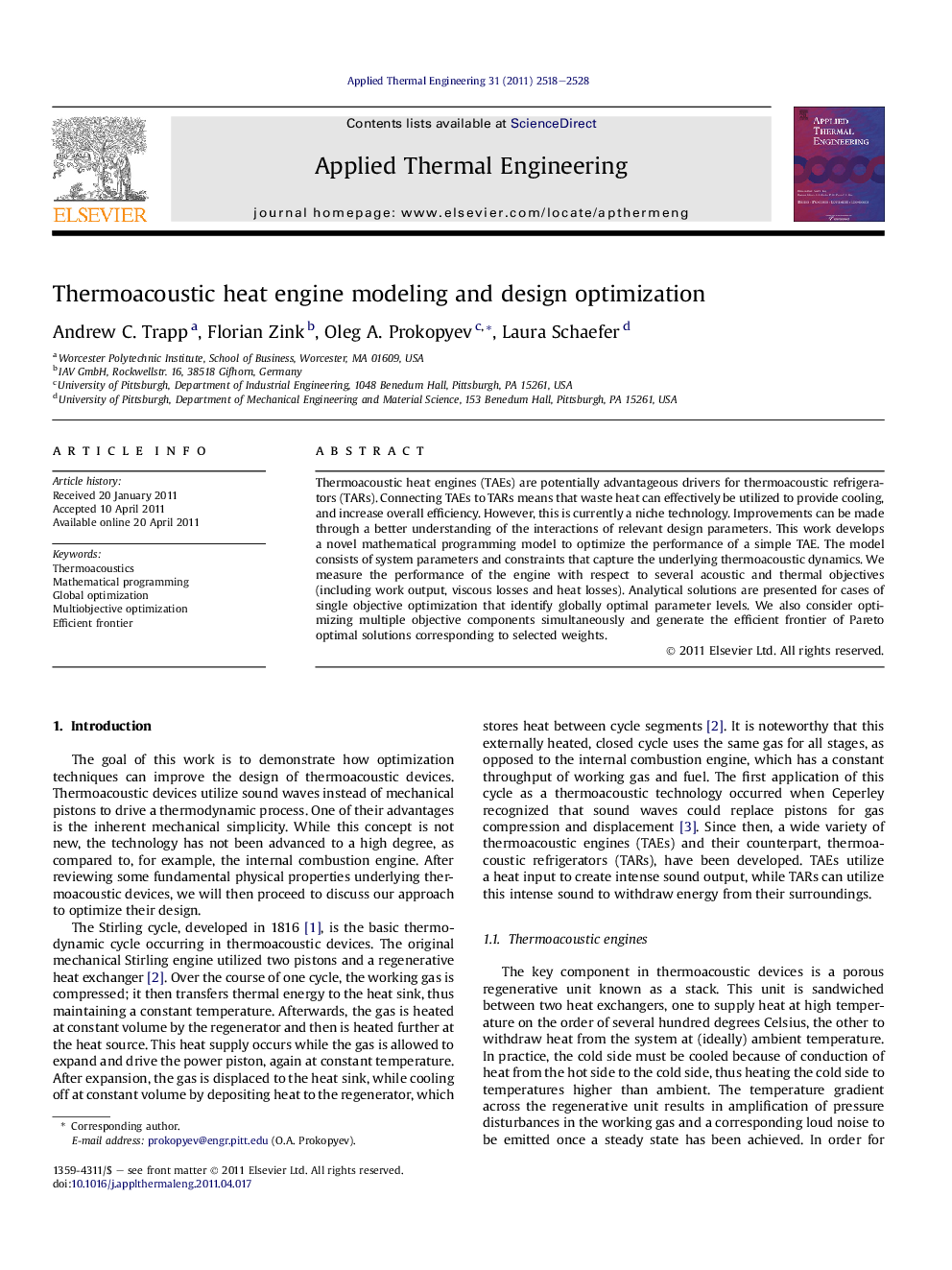| Article ID | Journal | Published Year | Pages | File Type |
|---|---|---|---|---|
| 647742 | Applied Thermal Engineering | 2011 | 11 Pages |
Thermoacoustic heat engines (TAEs) are potentially advantageous drivers for thermoacoustic refrigerators (TARs). Connecting TAEs to TARs means that waste heat can effectively be utilized to provide cooling, and increase overall efficiency. However, this is currently a niche technology. Improvements can be made through a better understanding of the interactions of relevant design parameters. This work develops a novel mathematical programming model to optimize the performance of a simple TAE. The model consists of system parameters and constraints that capture the underlying thermoacoustic dynamics. We measure the performance of the engine with respect to several acoustic and thermal objectives (including work output, viscous losses and heat losses). Analytical solutions are presented for cases of single objective optimization that identify globally optimal parameter levels. We also consider optimizing multiple objective components simultaneously and generate the efficient frontier of Pareto optimal solutions corresponding to selected weights.
► We model a simple thermoacoustic engine (TAE) via mathematical programming techniques. ► The model has several acoustic and thermal objectives, including work and losses. ► We optimize the mathematical program to find globally optimal TAE parameter levels. ► For single objective cases, analytical solutions are presented. ► For two multiobjective cases, we generate the Pareto frontier of optimal solutions.
